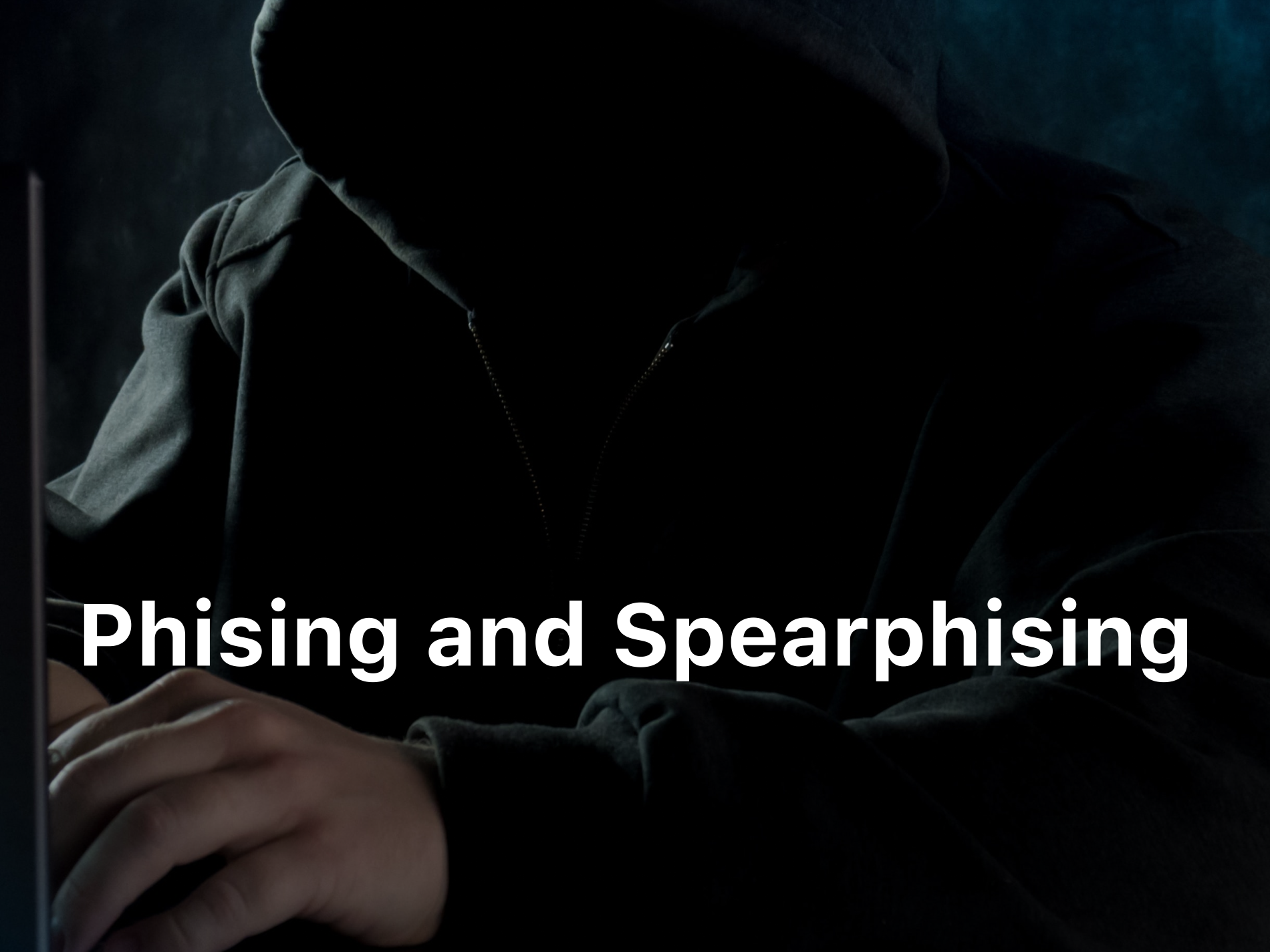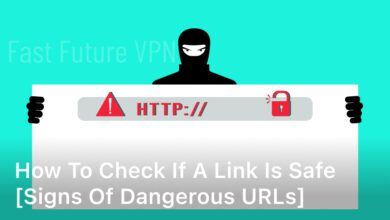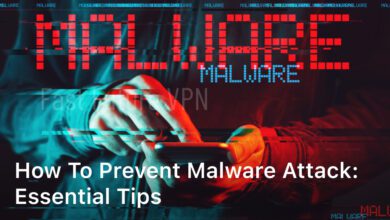
As you browse the internet and check your email, you need to be on alert for cyber threats like phishing and spearphishing. These fraudulent schemes are designed to trick you into providing sensitive data or downloading malware. Phishing uses broad messages targeting many people, while spearphishing targets specific individuals or groups with personalized messages. Both can appear legitimate but contain malicious links or attachments.
Staying vigilant about these hacking techniques is critical to protecting your online security and privacy. Understanding how to spot phishing and spearphishing attempts can help you avoid becoming a victim of fraud or identity theft. Knowledge is power in the world of cybercrime, so educating yourself on the latest online threats is one of the best defenses. With cyberattacks on the rise, individuals and businesses alike must remain cautious of unsolicited messages and suspicious links to keep their digital information safe. Staying one step ahead of hackers and scammers is essential to navigating the internet securely.
What Is Phishing and spearphising?
Phishing is a fraudulent attempt to obtain sensitive information or data, such as usernames, passwords, and credit card numbers, by disguising oneself as a trustworthy entity in an electronic communication. Typically carried out through email or malicious websites, phishing messages are designed to trick the recipient into providing personal information or downloading malware.
Once a phishing email has been opened by the recipient, the sender now has an open door to sensitive data or deployment of malware. The impacts of phishing range from account compromise to identity theft to financial loss. According to the Anti-Phishing Working Group, there were over 1 million phishing sites detected in 2020, so vigilance is critical.
To identify phishing emails, look for:
- Suspicious sender address or domain. Legitimate companies don’t use free email services or misspellings of their name.
- Alarming or urgent language. Phishers want to provoke a quick emotional response.
- Requests for sensitive data. Legitimate companies don’t ask for passwords, social security numbers, or account numbers via email.
- Poor grammar or spelling. Phishing emails are often poorly written.
- Links or attachments from unknown or untrusted senders. Never click links or download attachments from unsolicited emails.
By exercising caution with unsolicited electronic messages and verifying the identity of the sender before providing any sensitive information or clicking links, individuals and organizations can help curb the impact of phishing. Constant vigilance and education are key to combating these malicious hacking attempts.
How Does Phishing Work?
Phishing is a fraudulent attempt to obtain sensitive information or data, such as usernames, passwords, and credit card numbers, by disguising as a trustworthy entity in an electronic communication. Phishing messages are designed to trick recipients into providing personal information or downloading malware.
Phishing attacks are carried out through methods like:
- Emails: The most common method. Scammers send emails impersonating a legitimate company to trick you into providing personal information or downloading attachments containing malware.
- Text messages: Phishers send text messages with malicious links to steal information or install malware. These “smishing” messages appear to come from companies like banks asking you to verify account information.
- Phone calls: Scammers call victims while posing as tech support, bank representatives or government officials to steal data or money. These “vishing” attacks rely on social engineering to seem authentic.
- Malicious websites: Phishers create fake websites that appear legitimate to steal login credentials or personal information. They lure victims to these sites through other phishing methods.
- Infected public networks: Phishers set up malicious Wi-Fi hotspots or compromise existing networks to steal information from users who log in. They can access anything you do on these networks.
The key to avoiding phishing is skepticism and vigilance. Never provide sensitive data or click links in unsolicited communications. Always verify the identity of the requester before responding and be cautious when using public Wi-Fi networks. With awareness and caution, you can outsmart phishing attempts.
Types of Phishing Attacks: Spearphishing, Whaling, and Vishing
Spearphishing
Spearphishing targets specific individuals or groups with personalized messages to appear legitimate. Hackers research victims to gather personal details and craft convincing emails. These targeted attacks are more successful since people are more likely to click links or download attachments from someone they think they know.
Whaling
Whaling is a type of spearphishing that targets high-profile victims like executives or politicians who have access to sensitive data or funds. Criminals invest heavily in open-source intelligence gathering to profile victims and maximize the payoff. They may impersonate a colleague, customer or partner to trick the target into wiring money or disclosing account access.
Vishing
Vishing refers to phishing attempts over the phone. Scammers place calls posing as representatives from banks, credit card companies or government agencies to steal personal information or trick victims into wiring money. Caller ID spoofing allows criminals to mask their real phone number to appear legitimate. They may already have some of your personal details from a data breach to convince you of their authenticity.
The common thread across these phishing techniques is social engineering – manipulating people into divulging confidential details or authorizing fraudulent transactions. Hackers exploit human vulnerabilities like curiosity, fear, greed or trust in authority figures. The most effective defense is awareness and skepticism. Never click links, download attachments or provide sensitive data to unsolicited requests over email, phone or text. Legitimate companies will not ask for passwords, account numbers or wire transfers over unverified communication channels.
When in doubt, contact the organization directly instead of using contact information provided in the suspicious message. And enable two-factor authentication on accounts whenever possible for an added layer of security. While technology helps detect and filter many phishing attempts, human judgment is still the best defense. Stay vigilant and think before you click.
Common Phishing Emails and Scams
Phishing Emails Posing as Legitimate Companies
One of the most common phishing techniques is to send emails that appear to come from well-known companies like banks, credit card companies, and online services. These emails often claim there is an issue with your account or an unauthorized login attempt. They try to trick you into clicking a malicious link or downloading an infected attachment by creating a sense of urgency.
Fake Order Confirmations and Shipping Notifications
Phishers frequently send phony order confirmations, shipping notifications, and delivery failure messages posing as major retailers. They want you to click a link or download an attachment to “track your shipment” or “update your order.” In reality, these links and files contain malware, spyware or steal your personal information. Always go directly to the official website of any company instead of clicking links in unsolicited messages.
Related Article : Web3 An Overview of the Revolutionizing Blockchain
Lottery and Sweepstakes Scams
If you receive an unsolicited message claiming you’ve won a lottery or sweepstakes you never entered, it is surely a scam. Legitimate lotteries and sweepstakes do not notify winners via email. These phishing emails aim to trick you into paying “taxes” or “fees” to claim a fake prize or steal your personal data. Never respond to or click links in these fraudulent messages.
Charity Phishing Scams
Unfortunately, even charities are impersonated for phishing scams. Emails soliciting donations for disaster relief efforts, sick children, or animal shelters are commonly used to tug at people’s heartstrings. They provide links to fake charity websites designed to steal credit card numbers and personal information. Always verify the authenticity of any charity before donating money or sharing sensitive data.
In summary, remain vigilant of unsolicited messages and never click links or download attachments from unknown or untrusted senders. Take an extra moment to carefully inspect the sender’s address and check for spelling errors or inconsistencies before responding or taking requested action. If something sounds too good to be true, it likely is. Trust your instincts.
How to Protect Yourself From Phishing Scams
To protect yourself from phishing scams, you must remain vigilant and skeptical of unsolicited messages. Phishers employ clever techniques to appear legitimate, but with caution you can avoid becoming a victim.
Be wary of urgent or alarming messages
Messages conveying a sense of urgency or alarm are common phishing tactics. They aim to prompt a quick emotional response, hoping you will click links or download attachments without scrutiny. Take a moment to verify the sender and message content before responding.
Never click links or download attachments from unverified senders
One of the most common ways phishers distribute malware or steal information is through malicious links and attachments. Unless you have explicitly verified the sender and are expecting the message, do not click any links or download any attachments.
Check for spelling and grammar errors
Phishing messages often contain spelling, grammar, and punctuation errors. While not always the case, poor writing quality can indicate a phishing attempt. Look for inconsistencies that signal the message may not be legitimate.
Verify the sender’s identity
Just because a message appears to come from a company or person you know does not mean it is actually from them. Phishers spoof sender names and email addresses to seem authentic. Independently look up the company’s or person’s contact information and call them to validate the message.
Be cautious of requests for personal information or account access
Legitimate companies will not ask for sensitive data like social security numbers, account numbers, or login credentials through email. Phishers make these requests to steal information and access accounts. Never provide personal information or account access in response to an unsolicited message.
Report suspected phishing messages
If you receive a message you believe to be a phishing attempt, report it to the FTC, FBI Internet Crime Complaint Center, and the company being impersonated. Provide as many details as possible about the message to aid in preventing and stopping phishing schemes. The more people report phishing, the easier it is for companies and government agencies to take action.
Conclusion
In conclusion, you must remain vigilant about phishing and spearphishing attempts. These malicious hacking techniques have become increasingly sophisticated, often mimicking legitimate companies and targeting individuals. But with awareness and caution, you can avoid becoming a victim. Never click links or download attachments from unsolicited messages. Never provide sensitive data like account numbers, passwords, or Social Security numbers in response to requests in emails or texts. If something sounds too good to be true, it likely is. Stay skeptical, and when in doubt, verify the message by contacting the company directly. By remaining vigilant and taking proactive steps to strengthen your online security, you can surf the web with more peace of mind. The threats are real, but with knowledge comes power. You have the power to protect yourself.




